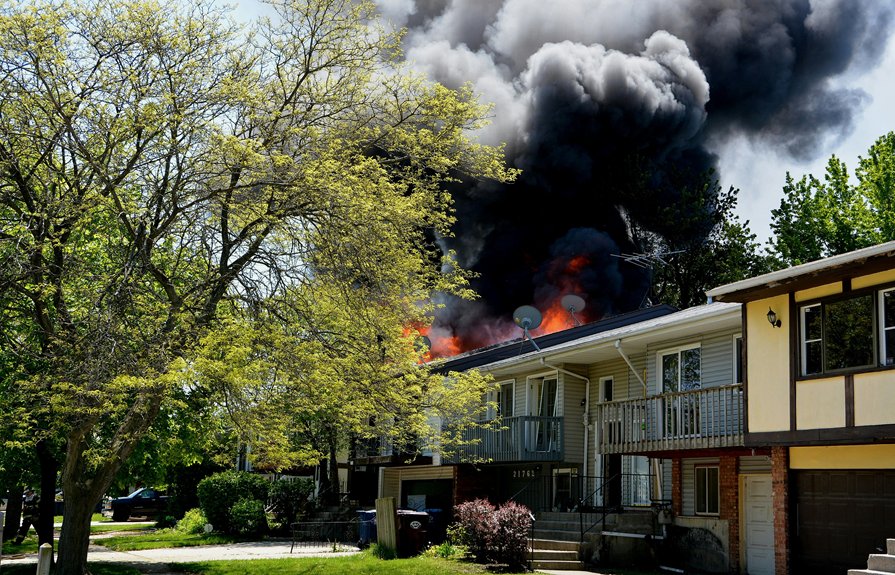Dealing with roof insurance claims in Oklahoma City can feel overwhelming, especially after a storm or damaging event. You need to understand your policy, document everything thoroughly, and communicate effectively with your insurer. The process isn’t always straightforward, and knowing what steps to take can make a significant difference in getting fair compensation. Staying organized and prepared will help you navigate the claims process more smoothly—so, let’s explore how to handle this critical task confidently.
Understanding Your Insurance Policy and Coverage
Before filing a roof insurance claim, it’s essential to understand what your policy covers. Start by reviewing your insurance policy carefully, paying attention to policy exclusions that might limit coverage. Some policies exclude damage from certain natural disasters or require specific maintenance to keep your coverage valid. Additionally, understanding the coverage limits and how they apply to your particular situation helps prevent surprises when settling your claim. Understanding these exclusions helps you set realistic expectations. Additionally, know how premium calculations influence your coverage limits and deductibles. Your premium amount can affect the scope of coverage and the deductible you’ll pay out of pocket. Being familiar with these details guarantees you won’t be caught off guard during the claims process. Taking the time to understand your policy now saves you headaches later and helps you navigate the claim process with confidence.
Documenting the Damage Thoroughly
Thoroughly documenting the damage to your roof is essential to guarantee your insurance claim is processed smoothly. Begin with a detailed roof inspection, noting all visible issues such as missing shingles, leaks, or structural damage.
Take clear, timestamped photographs from multiple angles to capture the extent of the damage. Include close-ups of problem areas and broader shots of the entire roof.
Keep a written record of when the damage occurred and any temporary repairs you make. This claim documentation provides vital evidence for your insurer and helps prevent delays.
Be thorough and organized, ensuring all damage is accounted for. Proper documentation increases your chances of a fair settlement and speeds up the claims process, so don’t overlook any detail.
Notifying Your Insurance Provider Promptly
Once you’ve documented the damage to your roof, the next step is to notify your insurance provider without delay. Prompt notification is vital because claim deadlines can vary, and missing them might mean losing coverage.
Be aware of your policy exclusions, which could limit or deny your claim if certain damages aren’t covered. Contact your insurer as soon as possible, ideally within a few days of the damage occurring, to ensure your claim is filed within the required timeframe.
Providing timely notice helps prevent complications and demonstrates your proactive approach. Keep records of all communications and follow the instructions outlined in your policy to avoid any issues that could arise from overlooked deadlines or policy exclusions.
Working With Adjusters and Inspectors
When working with adjusters and inspectors, clear communication and preparation are essential. Make sure you understand your claim deadlines so you can schedule inspections promptly.
Be honest and thorough when answering questions, and provide any documentation or photos that support your case. It’s also vital to review your policy exclusions beforehand, so you know what damages are covered and what might be denied.
Stay organized by keeping a record of all interactions, reports, and correspondence related to your claim. If discrepancies arise, calmly clarify your concerns.
Reviewing and Negotiating the Settlement Offer
After the inspection and communication with adjusters and inspectors, you’ll receive a settlement offer. This is a key moment in the claims process, so review it carefully. Check that the offer covers all damages identified and aligns with your policy.
Don’t be afraid to ask questions or request detailed explanations if anything is unclear. During settlement negotiation, you can present additional evidence, like photos or contractor estimates, to support a higher settlement if needed.
Remember, this is a negotiation, so stay firm but respectful. If the offer doesn’t meet your expectations, you have the right to negotiate or escalate the claim.
Staying proactive and informed will help ensure you get a fair settlement to cover your roof repairs.
Completing Repairs and Keeping Records
Completing your roof repairs promptly and thoroughly is essential to safeguard your property and ensure the insurance claim process stays on track.
Start by choosing the right roof material that matches your existing roof and withstands Oklahoma City’s weather, especially wind damage. Once repairs begin, keep detailed records of all work performed, including invoices, receipts, and photos of the damage and repairs.
Document any wind damage thoroughly, noting the date and extent of the destruction. This documentation helps prevent disputes and supports future claims.
Regularly communicate with your contractor and insurance adjuster to confirm that repairs meet policy requirements. Staying organized and diligent guarantees your roof is restored properly and that your insurance claim remains valid and efficient.
Conclusion
Handling roof insurance claims in Oklahoma City can feel overwhelming, but staying organized and proactive makes it easier. Remember to thoroughly document damage, communicate promptly with your insurer, and work closely with adjusters. Review settlement offers carefully, negotiate when needed, and keep detailed records of all repairs and receipts. For more information on how to schedule your free roof inspection, call us at (405) 543-2920 or visit us online at Top View Roofing. By staying informed and organized, you’ll ensure a smoother process and get your roof repaired efficiently, so you can enjoy peace of mind knowing your home is protected.











